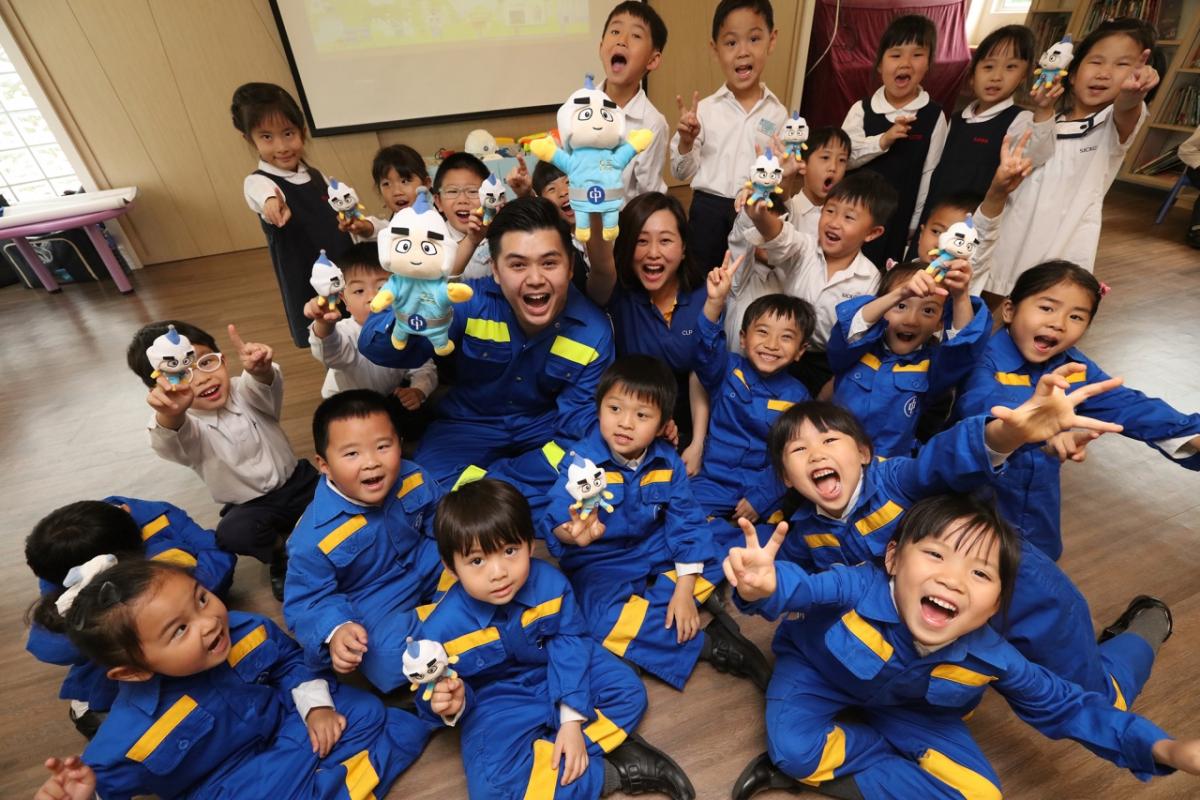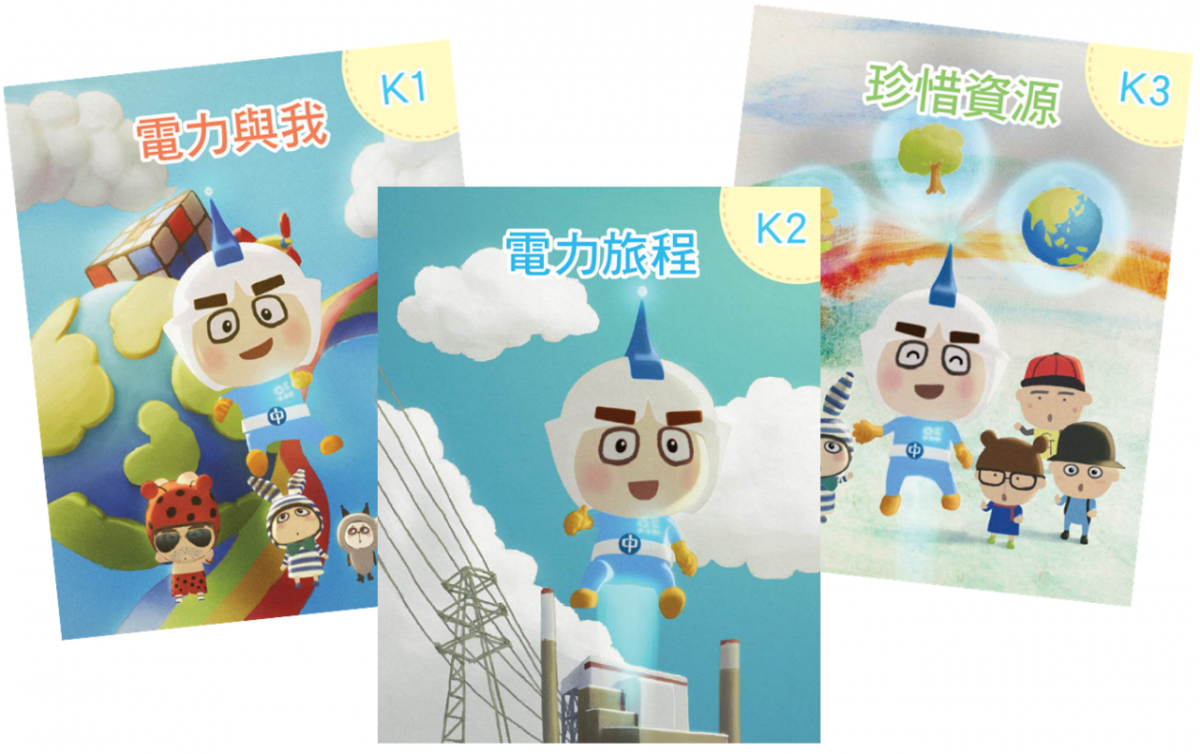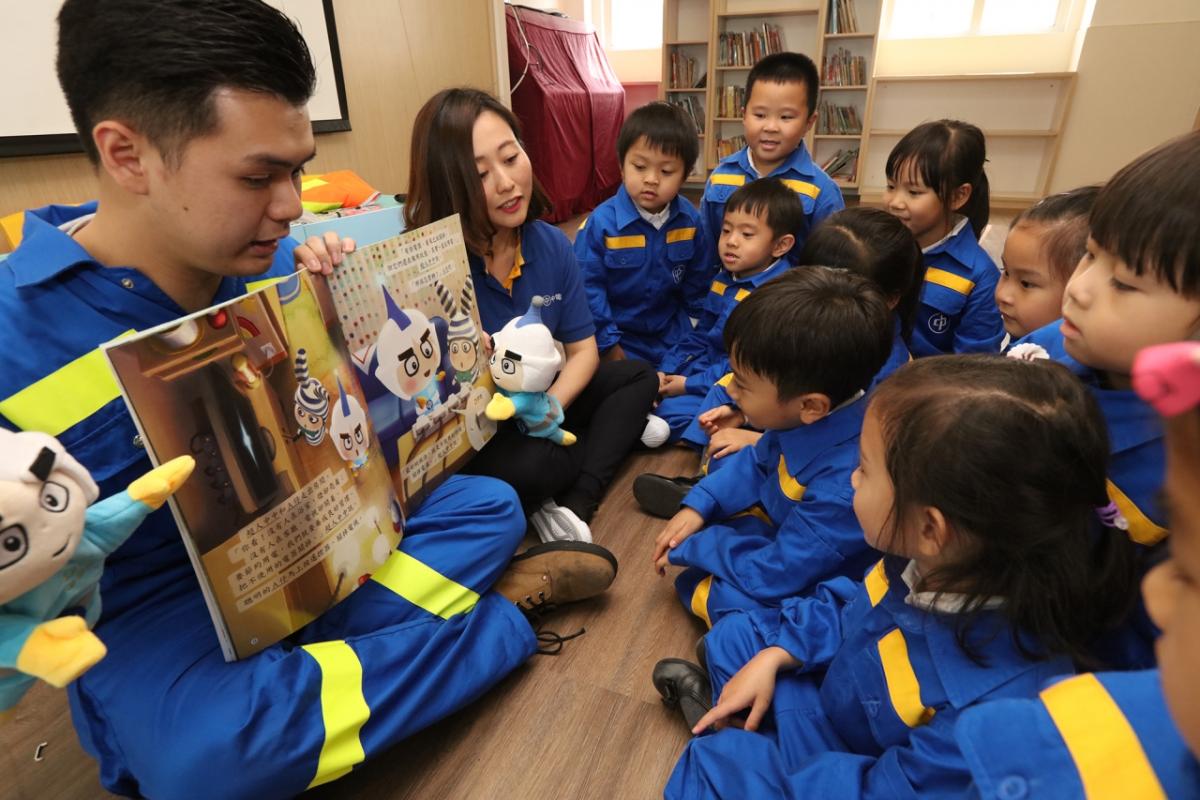Kid Power to Help Save the Earth
“Do you want to help save the planet?” CLP Power graduate trainee Crystal Kwan asks the children at a kindergarten in Shatin. In a split second, more than a dozen hands shoot up into the air as the boys and girls cry out in unison: “Yes, I do. I do.”
Similar happy scenes have been repeated in kindergartens across Hong Kong as CLP young engineers and graduate trainees talk to youngsters about power generation, energy saving, and what it’s like to be an engineer. The response from the toddlers has been overwhelmingly enthusiastic.
“The kids are all so sweet,” says Crystal. “They want to learn about everything – how electricity is produced, where energy comes from, and what engineers do.”
Sowing seeds
The kindergarten visits are part of CLP Power’s public education initiatives spanning the entire education pathway from kindergarten to university. They aim at raising young children’s awareness about the challenges of climate change, teaching them about low-carbon lifestyles and sowing the seeds of green living from an early age.
The visits were introduced after the successful launch of the POWER YOU Kindergarten Education Kit in 2016. The kit, comprising story books, finger puppets and other engaging learning tools, was developed to teach children about energy efficiency and has been warmly welcomed by more than 180,000 youngsters in 1,000 Hong Kong kindergartens. Power Kid – the iconic character created for the kit – steals the show every time he joins the visit, says Crystal. “He is like a hero,” she says, describing how a sing-along with Power Kid makes the students’ day. Many of the kids know the theme song Please Come and Save the Earth by heart.
James Lam, another CLP Power graduate trainee taking part in the programme, says the kindergarten visits are special as they reach an audience who can make a genuine difference to the future.
“When I was their age, I knew nothing about protecting the environment. Now they have the opportunity to learn, and I am excited to be able to share my knowledge with them and talk about things like renewable energy,” says James.
“We tell them stories about energy – from generation to power systems, and harnessing the power of wind and the sun to generate electricity. You can see the spark in their eyes when they compete to answer questions.”
James, who has been interested in science and technology since he was a teenager, says he is impressed that many of the children – boys and girls alike – want to become engineers when they grow up.
Crystal and James believe the equipment they bring with them for the visits such as safety helmets, reflective vests, and eye protectors help capture the children’s imagination.
“The equipment looks so cool and it is new to the kids,” says Crystal. “They are amazed when I show them how my safety shoes can protect me from electric shocks.”
Personal touch
Lee Mei Yuk, the principal of TWGHs Lui Fung Faung Memorial Kindergarten, says the visits are effective compared to regular classroom lessons because they allow children to find out about the world of energy and meet engineers in person.
“The experience is invaluable as they can have a better understanding about electricity and renewable energy,” Lee says. “Through the visit, they have the chance to look at the engineers’ equipment and even a small part of a real electric cable.”
“The visits are great opportunities to reach out to the kids. It would be even better if the visits could involve parents too, because the green message should not stop at school but should go to the families too.”
Home learning
Chief Corporate Development Officer of CLP Power Quince Chong says green education is the key to promote environmental protection and a centrepiece of the company’s community initiatives.
“The sooner the better. We believe that green education that starts in early childhood can have powerful long-lasting impacts. That’s why CLP is committed to promoting awareness of environmental protection through continued public education. We have already introduced a host of environmental education activities for primary and secondary schools as well as university and college students,” Quince says.
“We hope visits to kindergarten students will give them a basic understanding of electricity and energy conservation. We also hope it will motivate their family members and the community at large to adopt energy saving habits and low-carbon lifestyles. When it comes to climate action, small steps can lead to big changes.”
To learn more about CLP’s connection with society, please check out the latest issue of CLP.CONNECT.




